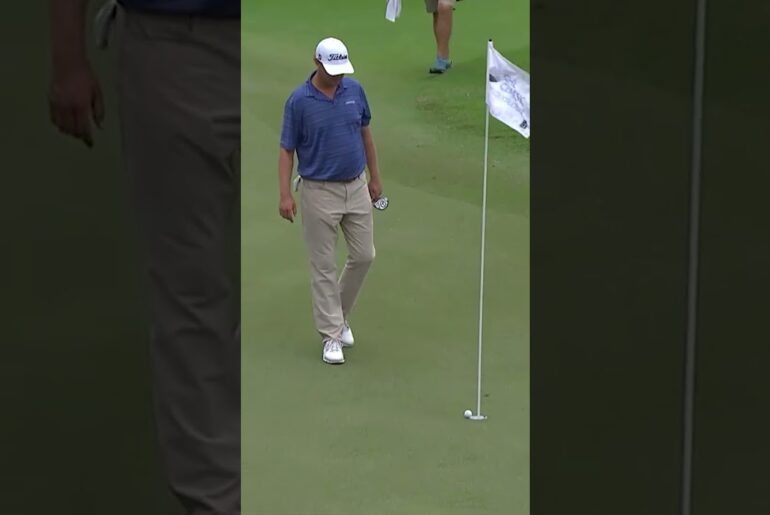All right. So, what made Rory Mroy and Scotty Sheffller’s drivers non-conforming, or as you might call it, illegal at the PGA Championship and why they couldn’t use them? Well, the most likely culprit in the 100page manual of USG and RNA rules that declares what is and isn’t a conforming golf club is most likely what’s called characteristic time. Characteristic time is a measure of how long the golf ball spends on the driver face at impact. There are rules governing how much energy can be transferred from your driver swing which is kinetic energy to impact of the golf ball which is elastic potential energy that turns into kinetic energy and sends the ball flying. There is a maximum percentage of that transfer which is 82.2% with a tolerance of about 83%. And so they test this in the field using a pendulum. And the pendulum swings into the golf club face, the driver face, and it measures how much time that object spends in contact with the driver face. That’s the rule. The maximum limit with the tolerance is 257 micros, which is 257 millionths of a second is the maximum amount of time that the ball can be in contact with the face and then it has to fly off. So most likely what happened is the characteristic time was a little high, like a microcond or two, and that made it non-conforming. So what does that mean in terms of of a performance benefit for either of these guys who hit the ball so far anyway that they’re 30 or 40 yards often past many of their peers? Well, the 18 microcond tolerance from that 257 microconds to the actual limit of 239, that means a quarter of a mile per hour of ball speed off the face, which equates to about a yard. So, it’s not that big of a deal that that made this club non-conforming. In the case of Sheffler and Mroy, it was probably one to two micro seconds off. Same thing happened as Andrew Schoffley at the 2019 Open Championship was off by one microcond, which basically meant nothing except that it was non-conforming. So for these guys, this happens pretty often because the materials in the driver face are so thin now. They’re so advanced. It’s kind of like you’re trying to tenderize a piece of meat that when you hit it enough times, eventually the meat, in this case, the metal flattens out and thins out, and it generates a spring-like effect by that impact that makes it just non-conforming enough that you got to take it out of play. This is something that happens to the best golfers in the world pretty regularly. They hit the center of the face so often and so fast that eventually their club heads become non-conforming and they’ve got to take them out of play. And then they put a new one in play, one that they like, and they start the process all over again.








1 Comment
It's important to note that these days, manufacturers often design their driver faces to be beyond the limits of conformity and then "dial it back" into conformity before it hits market. Lots of play with speeds like Rory will "wear down" the measures used to "dial it back".